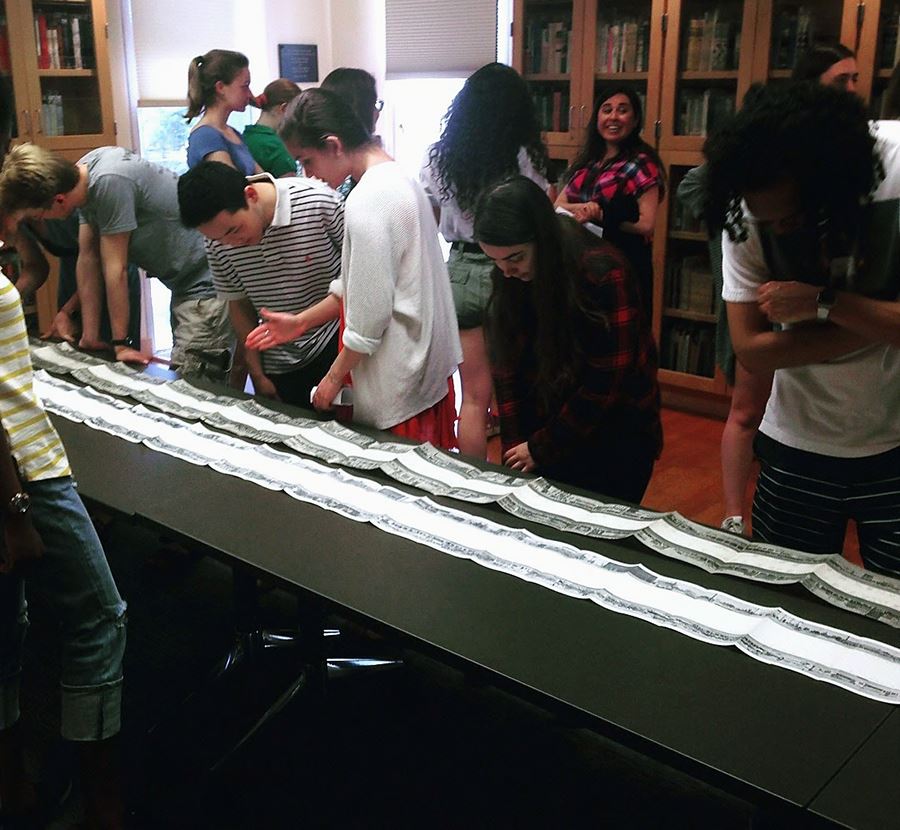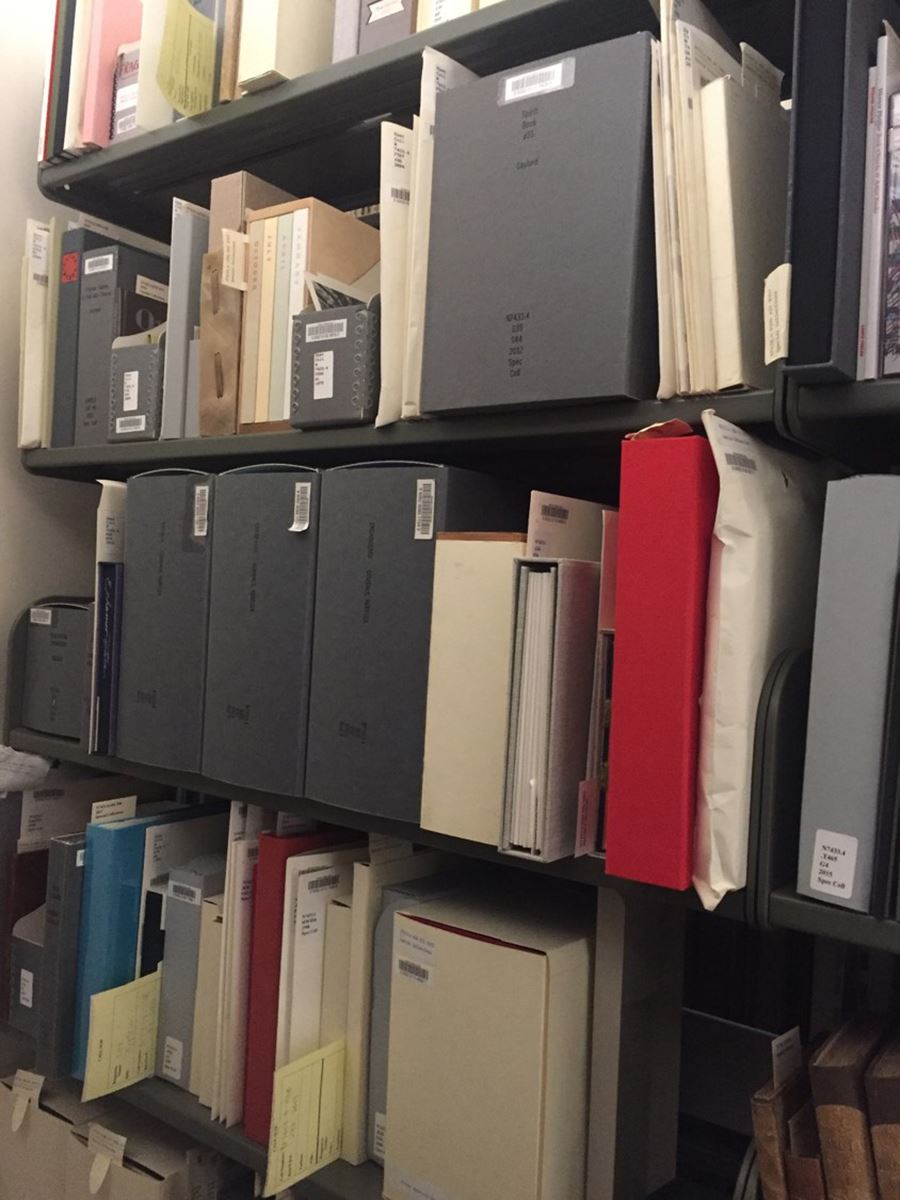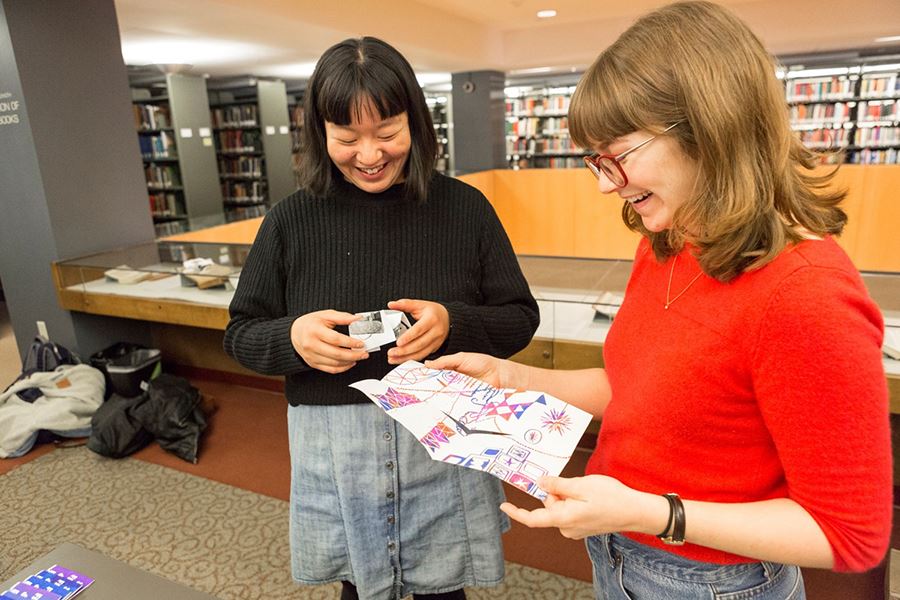Cathleen Miller and Marieke Van Der Steenhoven discuss the artist’s book from the perspective of academic special collections librarians who are responsible for artist’s book acquisition and access at their institutions.
Marieke Van Der Steenhoven: I’d love to talk a bit about issues of access and artists’ books. Lately, I’ve been thinking about access in terms of acquisition, description, preservation, and interpretation. I’ve been tethering collection development, limitations of cataloging systems, and issues around closed stacks, reading room, and teaching to these concepts to try to better understand where we are as stewards of artists’ book collections… and where we want to go.
Cathleen Miller: I feel like we’re in this strange moment where so many of us are talking about opening up our collections, dismantling barriers to access, and making our collections more welcoming, and yet, we’re still constrained by centuries of ideas about, and practice of, library and archives staff acting as gatekeepers. It is intimidating for so many people to walk through our doors, so when they get here, I do my best to create an atmosphere of exploration with as many open doors as possible. I try to explain our often-barrier-creating descriptive tools and try to make the experience of using our collections one of joy and discovery.

Bowdoin students at a special collections pop-up event that included unfolding Ed Ruscha’s Every Building on the Sunset Strip
MV: All of Bowdoin’s artists’ books are represented in the library’s catalog – a shared database with Colby and Bates College. Browsing the catalog can be tricky and is strictly text-based, and depending on when a book was catalogued (and by whom) you can find broad variances in subject headings and key words (is it an artist book? artists books? artist’s book?). In some ways you need to know what you’re looking for – especially since the stacks (where we store the books) are closed to the public. So most often, I serve as an intermediary offering recommendations to patrons (students, faculty, staff, public).
CM: As librarians and curators, of course we impact the experience—certainly, in teaching, I am choosing what books to show because I have an idea about what the students are supposed to be looking at, but I could be completely wrong about what they need. And every class is different; every visitor to the archives is in search of something unique. I try to be a gate opener so that people can have the experience they are seeking out, but I am always the mediator of some part of the experience, which I guess we can’t really get around when we’re not providing open-stacks access.

A glimpse into the closed stacks at Bowdoin College Library’s George J. Mitchell Department of Special Collections & Archives
MV: Another way we mediate experiences with artists’ books is through collection development and acquisition. This is something I’ve been thinking about a lot lately. In the early days of Bowdoin’s collection (1990s) we had a somewhat encyclopedic approach to collecting (like museums did in 19th century and general libraries did in 20th century) and for several years we’ve been transitioning towards a much more strategic collection policy. It’s interesting to see how the parameters of strategic collecting are reflecting the college’s priorities, to include artist’s book acquisition based on issues of diversity and inclusion, changing curriculum (emphasis on interdisciplinary, digital scholarship, etc.), and pedagogy.

Bowdoin College student printmakers examining book forms at a special collection pop-up Zine Fest
CM: Building our artists’ books collection has been so enjoyable. At first, I was buying from mostly artists we already had represented, but as I began to see the potential for using artists’ books as teaching tools that shaped the ways that I looked for books. Knowing that many of our students are going to become health professionals or scientists, I look for books that have some relevance to them. I am always on the lookout for books that represent health and illness experience, environmental themes, marine life—anything that bridges the gap between the arts and sciences. I like experiments with form, as well as really traditional forms for their value in teaching what a book can be.
MV: Yes, I totally agree!
CM: Also, my goodness, it is fun to spend someone else’s money! Of course, I am accountable to my collection development policy, colleagues, and institution, but within those constraints, it’s an incredible thing to be able to buy the first book someone has sold to a collection, or to support the career of a hard-working artist. This is the part that brings a lot of joy to me as a curator—knowing that when I build our collection, I am supporting a community of artists who have nurtured the culture of book-making in Maine. My budget is small, but each year, I buy a few pieces to add to my teaching palette and the collection becomes richer and more representative.
Cathleen Miller serves as curator of the Maine Women Writers Collection at the University of New England. She holds an MLS from Drexel University and an MA in English with a concentration in Poetry from Temple University. Cathleen’s poetry has been published in numerous journals and anthologies.
Marieke Van Der Steenhoven is the Special Collections Education and Outreach Librarian at Bowdoin College. Marieke holds a BA in Art History from Smith College and an MA in American and New England Studies with concentration in Public Culture and History from the University of Southern Maine.

